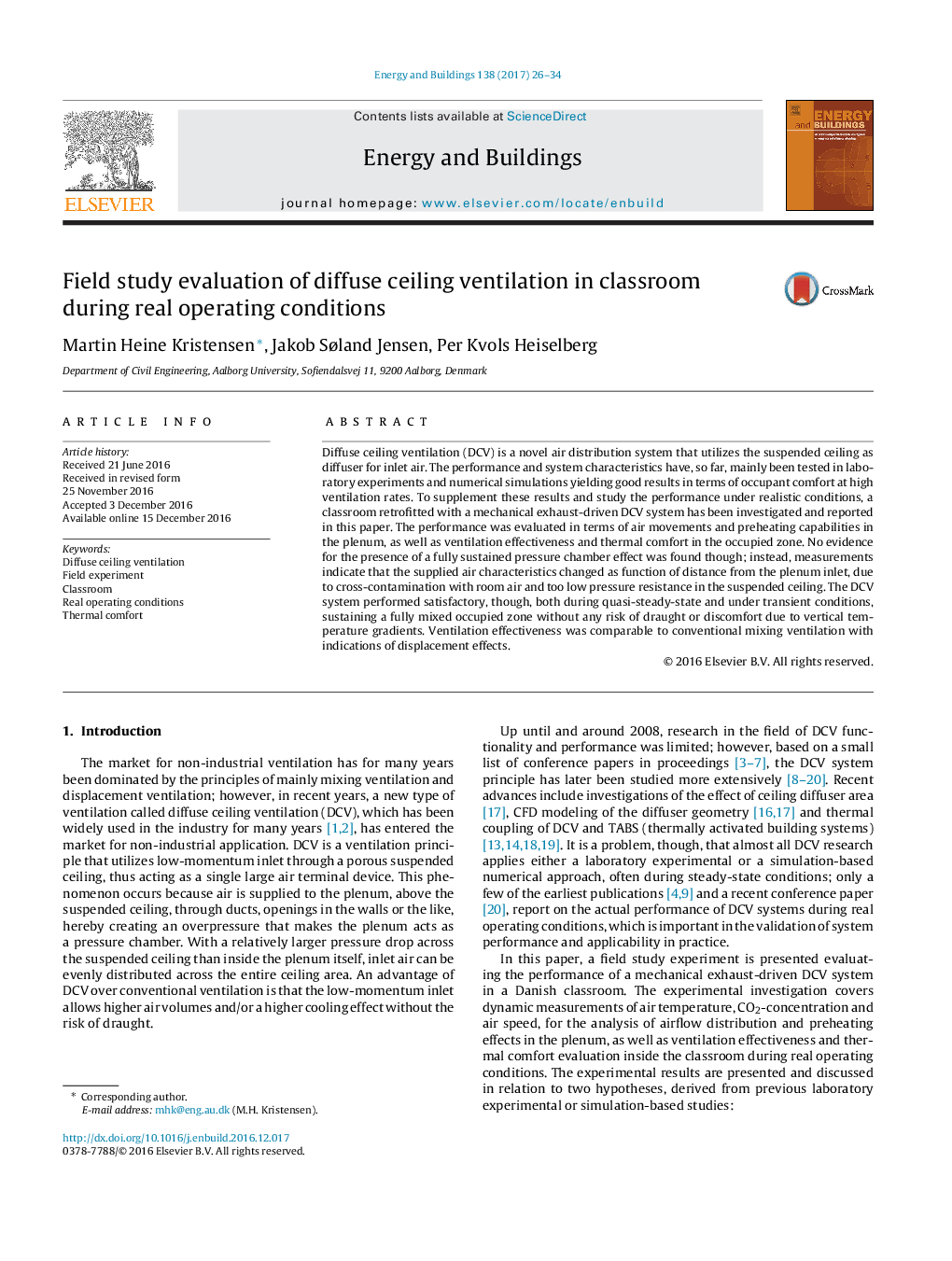| Article ID | Journal | Published Year | Pages | File Type |
|---|---|---|---|---|
| 4919418 | Energy and Buildings | 2017 | 9 Pages |
Abstract
Diffuse ceiling ventilation (DCV) is a novel air distribution system that utilizes the suspended ceiling as diffuser for inlet air. The performance and system characteristics have, so far, mainly been tested in laboratory experiments and numerical simulations yielding good results in terms of occupant comfort at high ventilation rates. To supplement these results and study the performance under realistic conditions, a classroom retrofitted with a mechanical exhaust-driven DCV system has been investigated and reported in this paper. The performance was evaluated in terms of air movements and preheating capabilities in the plenum, as well as ventilation effectiveness and thermal comfort in the occupied zone. No evidence for the presence of a fully sustained pressure chamber effect was found though; instead, measurements indicate that the supplied air characteristics changed as function of distance from the plenum inlet, due to cross-contamination with room air and too low pressure resistance in the suspended ceiling. The DCV system performed satisfactory, though, both during quasi-steady-state and under transient conditions, sustaining a fully mixed occupied zone without any risk of draught or discomfort due to vertical temperature gradients. Ventilation effectiveness was comparable to conventional mixing ventilation with indications of displacement effects.
Related Topics
Physical Sciences and Engineering
Energy
Renewable Energy, Sustainability and the Environment
Authors
Martin Heine Kristensen, Jakob Søland Jensen, Per Kvols Heiselberg,
